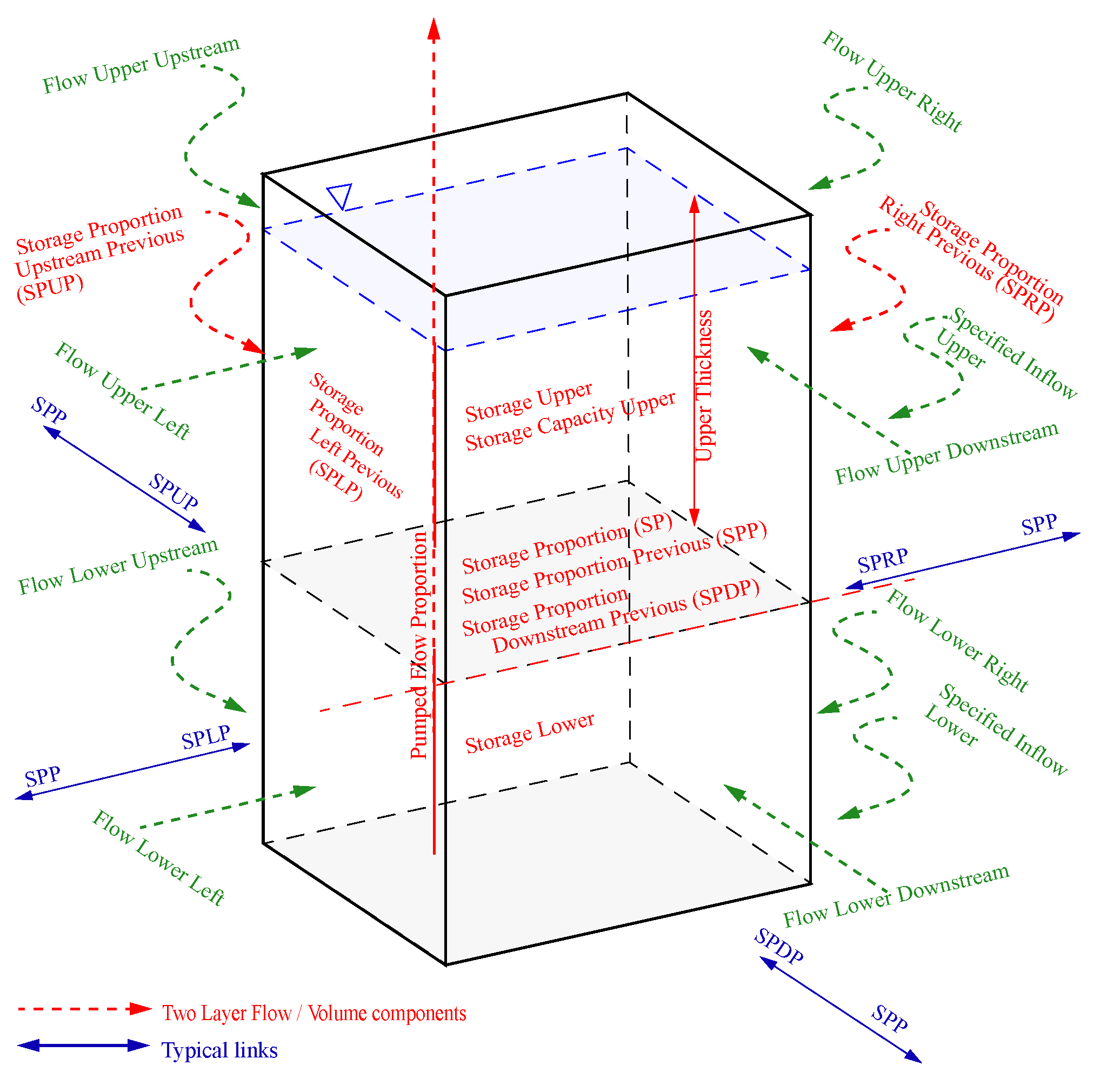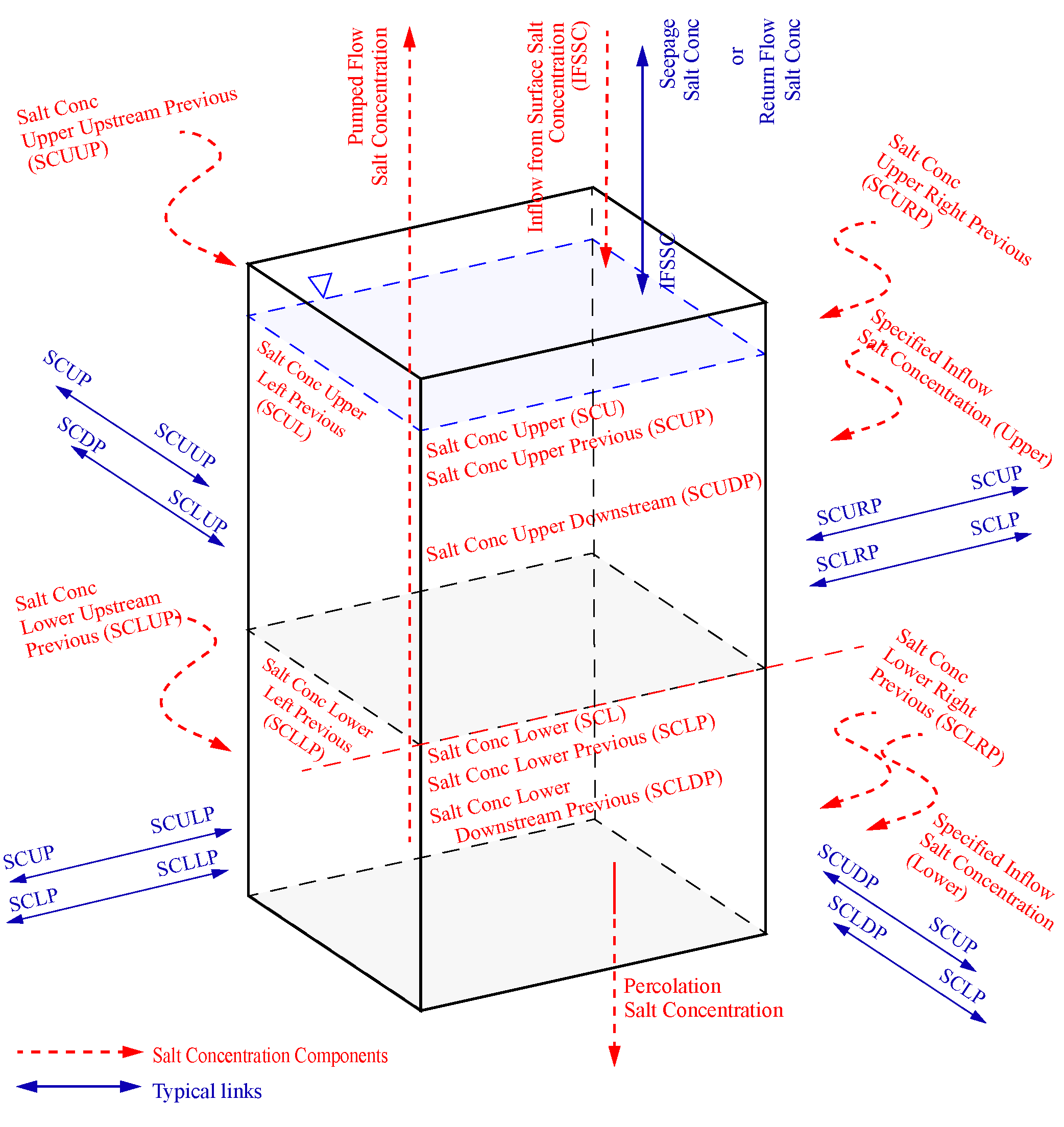Conceptual Overview of Salinity Modeling
Shallow groundwater is not always well mixed in terms of salinity. In some areas, the upper portion of the aquifer interacts quickly with the surface, but farther down, the interaction is slower. This process can be modeled as two fully mixed layers within the groundwater object. The current implementation of the ground water quality model allows you to model salinity with the Layered Salt method.
Figure 11.1 shows the groundwater object with two layers in terms of flow and volume slots. Figure 11.2 shows the two layers in terms of salinity slots.
All slots and links in the existing groundwater storage object are present, and in addition, the object includes slots and links for salinity modeling. See Solve given Inflow from Surface Water in Objects and Methods for an illustration of the Groundwater Storage object, including the mass balance components and typical links.
In this approach, the thickness of the upper layer is constant. All mass balance components, except Evaporation and Evapotranspiration, have an equivalent Salt Concentration component; they are shown in red in Figure 11.1. On the groundwater object, the Flow Upstream/Downstream/Left/Right, Inflow From Surface Water, Pumped Flow, and Percolation can be either negative or positive.When the flow is coming into the groundwater object, the salt concentration comes from the linked slot or is specified (input or rules). If the flow is out of the groundwater object, the concentration is computed by the groundwater object. When the groundwater object is defining the concentration, the previous values are used to avoid iteration problems.
Following are assumptions used in this computation:
• Inflow from Surface Water is added to (or removed from) the upper layer.
• Specified Inflow is added to either layer based on a user specified proportion.
• Evaporation is removed from the upper layer and no salt is removed.
• Evapotranspiration is removed from the upper layer and no salt is removed.
• Percolation is removed from (or added to) the lower layer.
• Pumped Flow is removed from (or added to) either layer as specified by the user.
Following is a conceptual overview of the computation to determine storage and salt concentration in each layer. See Dispatch Method - Solve 2 Layer Salt for details on this computation.
1. Determine the layer storages and the proportion based on the capacity of the upper layer.
2. Compute the lateral flow and salt flux from each layer based on the storage proportion on the given object or adjacent objects.
3. Compute pumped flow proportion and salt flux.
4. Compute inflow from surface water salt flux.
5. Compute specified inflow salt flux.
6. Compute percolation salt flux.
7. Compute the intermediate layer storage and concentration based on the computed incoming and outgoing components.
8. By comparing the intermediate and final storage and salt concentration, transfer water and salt between the two layers.
9. Compute the salt concentration of each layer.
10. Set salt mass slots if method is selected.
Note: This conceptual design is for two layers. It can be reduced to one layer by specifying a large Upper Thickness.
Figure 11.1 Slots on the groundwater object to model flow and volume with two layers

Figure 11.2 Slots on the groundwater object to model salinity with two layers

Revised: 01/10/2022